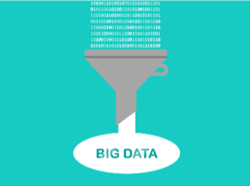8 Benefits of Centralizing Your Product Development Data
Managing multiple disciplinary teams to generate design data and documents for premarket submission and the actual production, servicing, and overall life cycle of your life science product is a big enough challenge already. When you have to manage that data across multiple, global worksites, the challenge becomes more complex.
One way to solve this is through centralizing your product development data. Your teams can see many benefits from database centralization, but here are eight benefits that have the most impact on your organization.
1. Data Access & Control
 When critical product data is stored at remote sites, making sure the appropriate team members have access is key to reducing data discrepancies. Otherwise, ensuring this control and access is difficult when data is distributed between worksites, and can lead to issues with versioning, data loss, or other major development concerns.
When critical product data is stored at remote sites, making sure the appropriate team members have access is key to reducing data discrepancies. Otherwise, ensuring this control and access is difficult when data is distributed between worksites, and can lead to issues with versioning, data loss, or other major development concerns.
2. Transparency
Having all your data in one location—with the right controls in place—can improve transparency in your product development processes. The generation of requirements, risk controls, tests, and other pieces of information necessary for your product design can be more easily tracked and monitored throughout your design and risk management activities.
3. Reducing Rework
It’s a commonplace that, when design documents and data are spread to remote sites, rework can become an inevitability. Whether as a result of data loss, redundant efforts due to lack of communication, or otherwise, rework costs valuable time and resources. With a centralized database, teams can see what has already been done and what they need to do to continue progress on the product design.
4. Retention of Insights and Other Data
 Robust development activities can lead to important information that adds to the design of your life science product. These findings can be lost as personnel changes occur, offsite hardware fails or goes offline, or issues occur in data migration. Keeping all your records in a centralized database avoids these risks altogether; insights are maintained in a single location and preserved as the project progresses.
Robust development activities can lead to important information that adds to the design of your life science product. These findings can be lost as personnel changes occur, offsite hardware fails or goes offline, or issues occur in data migration. Keeping all your records in a centralized database avoids these risks altogether; insights are maintained in a single location and preserved as the project progresses.
5. Empowering Global Teams
Regardless of where product data originated from, your teams can conduct development activities more easily when leveraging a centralized database. Teams can generate, analyze, and manage design and development data at any project stage where appropriate. Greater opportunities for interdisciplinary collaboration are more readily available as well.
6. Improving Traceability
Tracing data between design documents is vital to life science product development; linking requirements, risk controls, tests, etc. to each other ensures user needs are met and thorough processes have been followed to build a safe and effective product. Having to trace this data between documents from multiple sites is a nearly impossible task. When all this information is centralized, implementing and maintaining robust traceability is far simpler.
7. Greater Auditing Capacities
 For both external and internal audits, having a centralized database is extremely beneficial. With additional tools built in such as electronic signatures, audit trails, project phase gates, and so on, seeing who has touched your product design data and when can be done effortlessly. Rather than tracking this information down, it’s there at your fingertips when you need it.
For both external and internal audits, having a centralized database is extremely beneficial. With additional tools built in such as electronic signatures, audit trails, project phase gates, and so on, seeing who has touched your product design data and when can be done effortlessly. Rather than tracking this information down, it’s there at your fingertips when you need it.
8. Simpler Integration of Risk Management
Design data usually gets passed back and forth between your design and risk teams. This handing off of product information leaves risk management separated from design activities, which can cause a number of issues. By having all your data in one centralized location, that separation is broken down and risk management activities are integrated into your development processes. Risk analysis can be done in tandem with design work, and the results of those activities can be more rapidly incorporated into the product design.
About Cognition Corporation
At Cognition, our goal is to provide medical device and pharmaceutical companies with collaborative solutions to the compliance problems they face every day, allowing the customer to focus on their products rather than the system used to create them. We know we are successful when our customers have seamlessly integrated a quality system, making day-to-day compliance effortless and freeing up resources to focus on product safety and efficacy.




